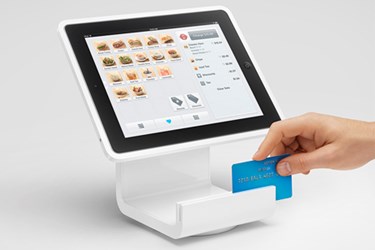Restaurant And Hospitality IT News For VARs — November 22, 2013

By Anna Rose Welch, Editorial & Community Director, Advancing RNA

In the news, the NRA urges legislators to end patent troll lawsuits, and a study results in projections about the technology restaurants will adopt in the next several years.
NRA Demands Congressional Action Against Patent Trolls
The National Restaurant Association (NRA) and 36 state restaurant associations have joined the ranks of other retailers urging the Senate to support reforms putting an end to patent troll lawsuits. Many of these lawsuits result in high defense costs, leading many restaurants to settle. Some of the lawsuits affecting the restaurant industry include the use of basic technologies on websites and smartphones. These include in-store Wi-Fi access, online nutrition calculators, and restaurant locators on websites and smartphones. The NRA says “Many of the technologies that have come under fire from patent trolls are ones that provide extensive value-added services.” Ultimately, the NRA says the threats of litigations discourage restaurants from partnering with new and innovative third-party technology providers.
Restaurant Technology: How Far Will It Go?
Nation’s Restaurant News outlines some of the projected technologies that will be gracing the restaurant industry by 2020. For example, various experts expect an increase in guests ordering via tablets, kiosks, or tabletop interfaces. Employees will be equipped with mobile POS devices, and mobile wallets will be a widely accepted form of payment. Experts also predict that restaurants will house voice, retina, or face recognition software programs to help restaurants identify loyal customers. Other projections include digital menu and marketing boards, interactive guest feedback, order preparation management systems, and wireless networking.
Hotel Industry Making A Recovery
Robert Carr of the National Real Estate Investor discusses the results of a recent Jones Lang LaSalle report suggesting the hotel market is close to making a full recovery since the recession. According to the Carr, the national occupancy has almost reached the 2006 peak levels, has encountered growth in revenue per room, and is facing more interest from investors. The volume of transactions this year has increased 15 percent since last year, and 2014 is expected to bring an additional 15 percent in growth. According to Jones Lang LaSalle experts, because lenders held back on new development financing, there is a limited supply of properties. The recovering economy and growing number of travelers has led the hospitality industry to slowly regain strength. Luxury and resort properties in particular, are increasingly attractive commodities in the market.
Opportunities Exist For Restaurant Loyalty Programs
FSR Magazine highlights some of the key findings from a new Market Intelligence Report from Technomic. The report reveals only 36 percent of consumers claim they participate in a restaurant-based loyalty program. However, 80 percent agree they’d sign up for one should their favorite restaurant begin to offer a loyalty program. These findings suggest loyalty programs would be an important investment opportunity for restaurants. For those that already have a loyalty program, more work could be done to build awareness of the program and its benefits. Consumers surveyed who are already part of a restaurant loyalty program are mostly enrolled in programs for casual-dining brands (57 percent) and fast-casual brands (44 percent).
Restaurant and Hospitality IT Talking Points
According to a recent Nielson survey, 60 percent of respondents claim they shop at stores with loyalty programs available, and 84 percent are more likely to visit a retailer with a loyalty program. Nearly a quarter of participants (24 percent) expressed their loyalty to mobile phone brands/service providers and financial institutions. Customers were less loyal to food–and-beverage categories, reporting they are more likely to switch brands. Similarly, 39 percent of customers surveyed say they were not loyal to online retailers.
Bret Thorn for Nation’s Restaurant News says restaurants are coming up with creative ways to educate consumers about the origin of their food choices. In particular, one chef uses edible QR codes printed in edible ink on the food so smartphone owners can learn more about where their food came from.
Sastry Penumarthy for Punchh describes the various options available to restaurants interested in launching a mobile loyalty program. For example, Penumarthy discusses the differences and best practices for visit-based programs, spend-based programs, and tiered-spend based programs.
Jennifer Goforth Gregory for Hospitality Technology lists some of the benefits and features of mobile-based waitlist solutions for restaurants looking to offer guests greater waiting-time flexibility.
